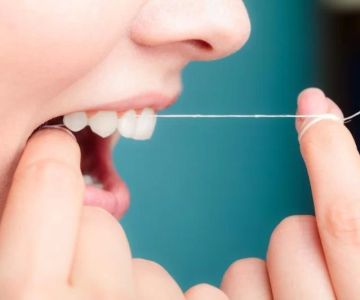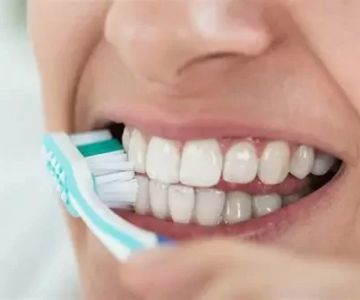1. Understanding Oral Hygiene and Its Importance
1.1. Defining Good Oral Hygiene
Oral hygiene encompasses daily habits such as brushing, flossing, and rinsing that remove plaque and bacteria from teeth and gums. Without consistent care, these microorganisms multiply, leading to a cascade of dental and health problems.
1.2. Why Consistency Matters
Regular removal of plaque prevents it from hardening into tartar, which can only be removed professionally. Skipping even a few days of proper care allows bacteria to penetrate gum tissue, setting the stage for more serious conditions.
2. Consequences of Bad Oral Hygiene
2.1. Dental Decay and Cavities
When sugars and starches from food interact with plaque bacteria, acids form that erode enamel. Over time, small pits become cavities. Left untreated, these can progress to deep infections requiring root canal or extraction.
2.1.1. Early Warning Signs
Sensitivity to hot or cold foods, visible pits in enamel, or persistent bad breath may indicate the beginning of decay. Ignoring these signs often leads to more invasive—and expensive—treatments.
2.2. Gum Disease and Periodontitis
Plaque buildup along the gum line causes inflammation known as gingivitis. Without intervention, it can advance to periodontitis, where gums recede and bone structure deteriorates, potentially leading to tooth loss.
2.2.1. Long-Term Effects on Teeth
Receding gums expose tooth roots, increasing sensitivity and risk of root cavities. Advanced periodontitis can undermine the entire jawbone, making prosthetic replacements like implants or dentures necessary.
2.3. Systemic Health Implications
Research shows bacteria from periodontitis can enter the bloodstream, contributing to systemic inflammation. This inflammation is linked to cardiovascular disease, diabetes complications, and even respiratory infections.
2.3.1. Heart Disease Connection
People with chronic gum disease have a higher risk of clogged arteries. The same inflammatory markers found in gum tissue flare-ups appear in arterial plaques, increasing heart attack risk.
3. Real-Life Stories That Highlight the Risks
3.1. Sophia’s Warning: From Neglect to Extraction
Sophia, a busy graphic designer, skipped flossing for months. She developed severe gingivitis that progressed to periodontitis. By the time she sought help, two molars needed extraction—a painful lesson in the cost of neglect.
3.2. John’s Journey: Managing Diabetes and Gum Health
John, diagnosed with type 2 diabetes, struggled with uncontrolled blood sugar and poor oral hygiene. Recurrent gum infections made his diabetes harder to manage. After intensive dental treatment and better home care, his overall health improved dramatically.
4. Prevention and Best Practices
4.1. Daily Care Routine
4.1.1. Brushing Techniques
Use a soft-bristled brush at a 45° angle to the gum line. Brush for at least two minutes twice daily, covering all tooth surfaces and the tongue to reduce bacteria.
4.1.2. Flossing Essentials
Floss once daily, curving the floss around each tooth and sliding gently beneath the gum line. This removes plaque where brushes can’t reach.
4.1.3. Mouthwash Selection
An antimicrobial or fluoride mouthwash can further reduce bacterial load and strengthen enamel. Choose alcohol-free formulas to avoid dryness.
4.2. Professional Care Recommendations
Visit your dentist every six months for cleaning and exam. Dental hygienists remove tartar and spot early signs of decay or gum disease before they escalate.
4.3. Personalized Solutions at Dentistry Toothtruth
For tailored advice and advanced preventive care, visit Dentistry Toothtruth. Their experts offer comprehensive assessments, custom cleaning plans, and education to help you maintain optimal oral health.
5. Long-Term Benefits of Maintaining Good Oral Hygiene
5.1. Enhanced Quality of Life
Healthy teeth and gums allow you to eat, speak, and smile confidently. Preventing dental issues reduces pain, treatment costs, and time lost to dental emergencies.
5.2. Improved Overall Health
By controlling oral bacteria and inflammation, you lower your risk for systemic diseases. Good oral hygiene supports better heart health, metabolic balance, and respiratory wellness.







 Red Cedar Dental Care4.0 (104 review)
Red Cedar Dental Care4.0 (104 review) Dover Dental Center4.0 (44 review)
Dover Dental Center4.0 (44 review) Tamarack Hills Family Dentistry4.0 (162 review)
Tamarack Hills Family Dentistry4.0 (162 review) Dr. Deeptha Surampudi, Crescent Family Dental0.0 (0 review)
Dr. Deeptha Surampudi, Crescent Family Dental0.0 (0 review) California Dental Group Bellflower4.0 (99 review)
California Dental Group Bellflower4.0 (99 review) ClearChoice Dental Implant Center4.0 (314 review)
ClearChoice Dental Implant Center4.0 (314 review) The Importance of Oral Health Education During Pregnancy for a Healthy Pregnancy
The Importance of Oral Health Education During Pregnancy for a Healthy Pregnancy Best Tips for Brushing Your Teeth Properly for Healthy Gums: Essential Techniques for Oral Health
Best Tips for Brushing Your Teeth Properly for Healthy Gums: Essential Techniques for Oral Health Why Skipping Dental Checkups Can Lead to Bigger Oral Health Problems
Why Skipping Dental Checkups Can Lead to Bigger Oral Health Problems Advantages of Porcelain Dental Restorations
Advantages of Porcelain Dental Restorations How Can Diabetes Cause Tooth and Gum Problems? Preventing and Managing Oral Health Issues
How Can Diabetes Cause Tooth and Gum Problems? Preventing and Managing Oral Health Issues Healthy Habits for Promoting Good Oral Health and Hygiene: Tips for a Healthy Smile
Healthy Habits for Promoting Good Oral Health and Hygiene: Tips for a Healthy Smile